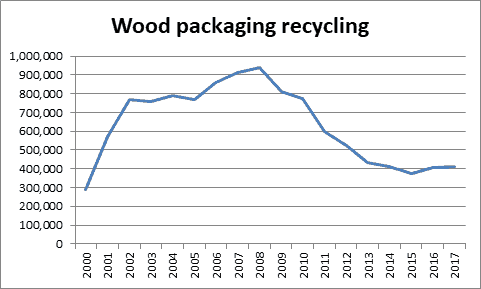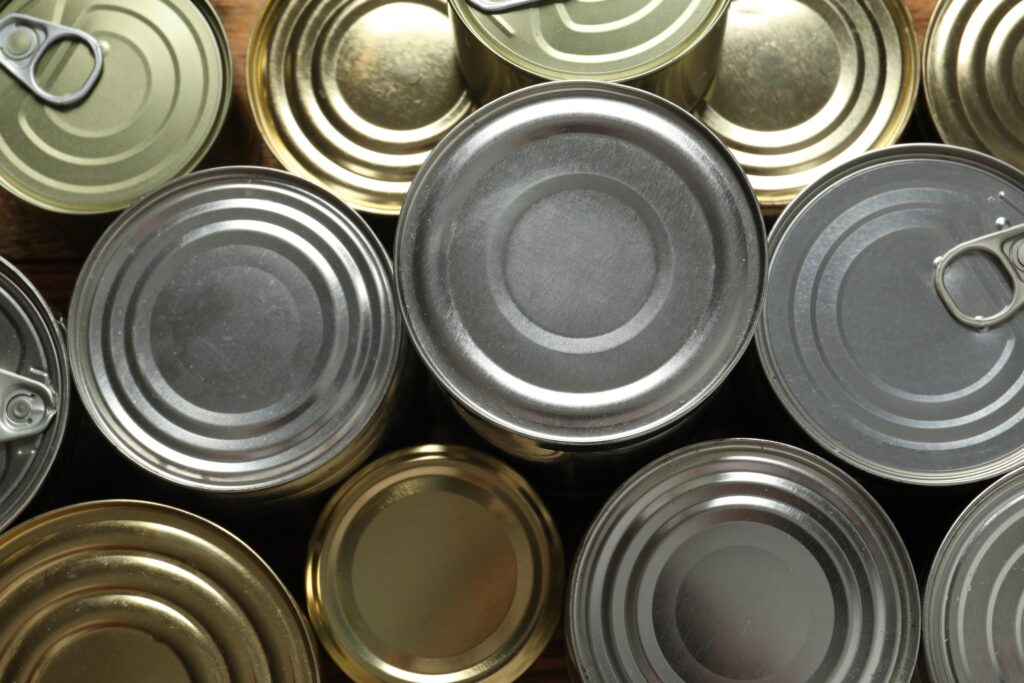Consequently, there is some uncertainty about the future of the UK’s confirmed wood recycling targets for 2019 and 2020 – which are set under the PRN system – and the knock-on impact on the value of wood PRNs.

The change in European thinking has come because of the strong biomass demand for waste wood and end-of-life wooden pallets, which are the main form of wood packaging waste.
Pallets
Targets for the recycling of various packaging materials had been proposed in 2015 by the European Union and were carried through to discussions last year over revisions to the Waste Framework Directive. For wood ‘preparing for reuse or recycling’, the 2015 proposals was to recycle 60% of wood packaging (usually pallets) by the end of 2025 and 75% by the end of December 2030.
But, under the latest target proposals which were finalised before Christmas, the wood recycling numbers have been hugely reduced. The much lower wood target has now been approved by European ambassadors and the Environment committee of the European Parliament and seems set to be approved by the UK and other member states this summer.
The new targets are for 25% and 30% in 2025 and 2030 respectively, virtually halving the previous target rate.
Defra
The idea of lower EU targets for wood recycling is likely be examined by the Department for Environment, Food and Rural Affairs which had pushed up the UK targets for 2018 through to 2020 because of the expected higher EU target. There was also an element of Defra thinking in pushing the targets up that it was trying to ensure wood recyclers had some financial benefit in the face of strong competition for wood packaging from the UK’s burgeoning wood biomass sector.

EU sources indicated that agreeing on higher targets proved difficult in the course of negotiations by the Commission with the European Council and Parliament because for many countries the preferred path for wood packaging is to reuse the pallets multiple times, and then recover the energy contained in the wood from the end-of-life wood pallets.
Impetus
Nevertheless, the Commission is thought to hope that the increase in the wood packaging recycling targets, even though they are more modest than the levels originally proposed, together with ambitious overall targets for the recycling of all packaging, will create a new impetus to increase recycling of wooden packaging waste.
And, the EU has recognised that there are member states which are achieving high recycling levels of 70-80% for wood packaging waste, in particular by using the waste stream in the production of particle board and so saving energy and other resources.
Defra and the UK
Defra increased the wood packaging recycling target for businesses this year by a massive 16% to 38% compared to 22% last year and it is due to rise to 43% next year and 48% in 2020. Consequently the value of the wood PRN in 2018 has already risen to about £9 a tonne this year compared to £2 a tonne 12 months ago.
Wood recycling businesses, such as panelboard makers, have been seeking long-term contracts with compliance schemes to supply wood PRNs at a higher price because of the Defra-imposed UK targets.
However, one observer said that the future value of the wood PRN beyond 2018 is now uncertain because Defra may have to react to the fact that the European targets (which the UK is likely to take on under the Brexit agreement) are so much lower than the UK targets.

Review
The department is currently reviewing the PRN system and is expected to make a number of modifications. It will be aware that the UK is now already actually meeting the wood recycling targets.
However, it will also need to set the UK targets at a rate sufficient to ensure the value of the wood PRN is high enough to ensure that too much packaging wood is not lost to biomass. There are a number of new plants due to come on stream this year and there is talk in the sector of the UK importing waste wood to meet domestic demand.
Within the wood panelboard sector (which is a major user of good quality recycled wood such as pallets) there is strong concern that wood is going to biomass plants which received subsidies for energy production and so provides ‘unfair’ competition in the eyes of some in the panelboard sector.
In terms of UK recycling, the graph (above) shows how the UK in the past was recycling more material, with the reduction partly due to the loss of the Sonae board making plant on Merseyside which was a major recycling business.
Packaging
Targets for all materials, as proposed by the EU, and which are expected to be agreed, are shown below.










Subscribe for free